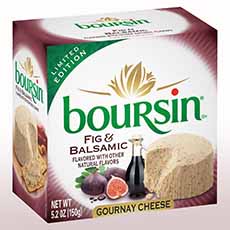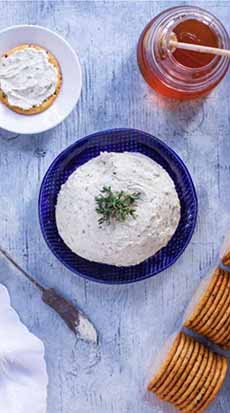|
If you’re a true cheese lover, you know that there are “so many cheeses, so little time.”
But we can cut down on the list a bit, because it’s National American Cheese Month.
The American Cheese Society says that, “American Cheese Month is a celebration of North America’s delicious and diverse cheeses, and the farmers, cheesemakers, retailers, cheesemongers and chefs who bring them to your table.”
So how about trying a different new-to-you, made-in-America cheese for American Cheese Month?
How about trying something new?
There are so many great artisan cheesemakers. We don’t mean to exclude anyone, but check out the websites of:
Beecher’s Handmade Cheese (cheddar- and jack-style cheeses)
Beehive Cheese (cheddar-style cheeses)
Belle Chevre (goat cream cheese)
Cypress Grove Chevre (goat cheeses)
Cowgirl Creamery (different varieties)
Fiscalini Farmstead (cheddar)
Grafton Village Cheese Company (cheddar)
Jasper Hill Farms (different varieties)
Mozzarella Company (Italian-style cheeses)
Old Chatham Sheepherding Creamery (sheep cheeses)
Point Reyes Farmstead Cheese Co. (blue cheeses)
Rogue Creamery (blue cheeses)
Uplands Cheese Company (cow’s milk cheeses)
Vermont Creamery (goat cheeses)
HOW ABOUT CRESCENZA CHEESE?
Crescenza, sometimes known as stracchino, is a staple in the Italian kitchen.
Says Mozzarella Company of Dallas, “Crescenza is one of those cheeses that no one has ever heard of but everyone loves when they taste it. It is a soft, fresh Italian cheese with a tart, clean flavor.
It is similar recipe to stracchino. The difference is that crescenza is made from whole milk or semi-skimmed milk and aged for 5-10 days, while stracchino is made only from whole milk and it aged for 20 days.
“Whenever we serve Crescenza at cheese tastings, this is the cheese that people invariably buy to take home.”
O.K…we’re in, we said, and we placed an order. It is as promised: delicious.
While the cheese is Italian in origin, there are a number of American cheese makers who make it; both artisan and factory producers.
Crescenza (creh-SEN-za) is made from cow’s milk. It is a young, soft cheese, aged for just a couple of weeks before it is sold.
Eaten very young, it has no rind and a very creamy texture. It is typically square in shape.
It is a great cheese for expressing the natural flavor and aromatics of a good quality milk, a showcase for the wonderful fresh flavors and aromas of the milk.
The Crescenza from Mozzarella Company:
Has a slightly tart, clean, somewhat yeasty flavor.
Is very soft and creamy and spreadable.
Melts beautifully.
How To Serve Crescenza
Beyond antipasto and appetizers, focaccia, sandwiches, melting on grilled cheese or other recipes (casseroles, ravioli, whatever).
For breakfast or a snack, spread on toast with a honey drizzle.
Melted over pasta to add a rich, tangy touch; or used for stuffed pastas.
As a dessert cheese, with berries.
For snacking or a cheese plate, The cheese was first made in Lombardy, Italy and areas adjacent to this northern Italy city where it is commonly served as a snacking or appetizer cheese with fruit,
For a cheese plate, pair crescenza with bread and:
Charcuterie and olives.
Sweet chutneys or fruit pastes.
Fresh and dried fruits and nuts.
Lighter and more acidic wines (there are many, but for starters, Chablis, Gewürztraminer, Muscat, Pinot Grigio/Pinot Gris, Riesling, Sauvignon Blanc, Vinho Verde).
CRESCENZA CHEESE HISTORY
Crescenza and stracchino have long been made in Northern Italy, regions of Liguria, Lombardy, Piedmont, Romagna and Veneto.
There’s a legend, of course.
Most cheeses are historically made in the spring and summer, when the pastures are lush and green, the days are long and the milk is as fresh as can be.
Crescenza and stracchino were traditionally made during the autumn and winter months, after the cows had descended from the mountain pastures.
The physical exertion of the hike increased the butterfat content of the milk, making a richer cheese.
The cows were tired after the long season and their descent; hence, tired cows.
For stracchino, the name of the cheese derives from the Lombard adjective stracco, meaning tired.
The origin of the name Crescenza comes from the Italian crescere, which means “to grow.” If kept in a warm place, the cheese tends to increase in size, just like rising bread!
> THE HISTORY OF CHEESE
|
|

[1] Humboldt Fog goat cheese from Cypress Grove Cheese, with the signature line of ash running through the center (photo © Cypress Grove Cheese).

[2] An assortment of cheeses from Cowgirl Creamery, from cows happily grazing in Marin and Sonoma Counties (photo © Cowgirl Creamery).
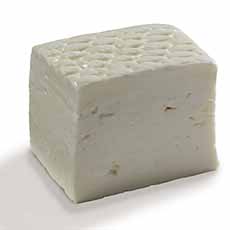 Crescenza Cheese[/caption] Crescenza Cheese[/caption]
[3] Artisan crescenza cheese, made in small batches by Mozzarella Company (photo © Mozzarella Company).
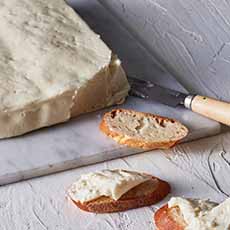
[4] Spread it on bread or crackers (photo © Wisconsin Cheese).
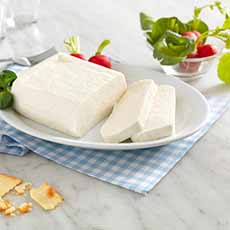
[5] Snack on it with raw vegetables (photo © Arrigoni Formaggi).

[6] An appetizer of prosciutto-wrapped crescenza cheese. Here’s the recipe (photo © BelGioioso Cheese).
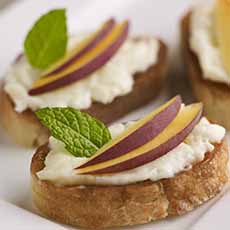
[7] Crescenza and peach crostini. You can substitute apples, pears, even grapefruit and oranges Here’s the recipe (photo © BelGioioso Cheese).
|


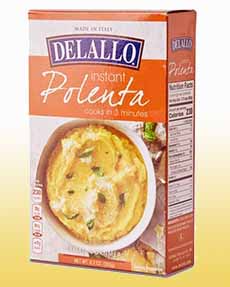
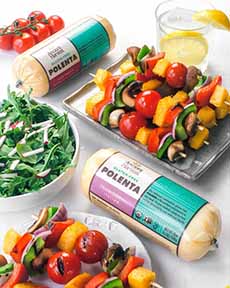
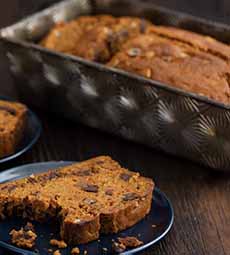
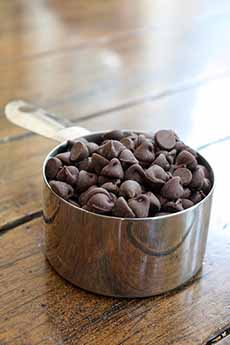

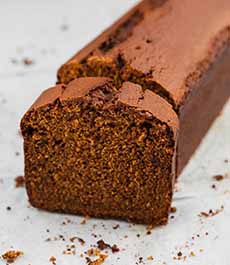

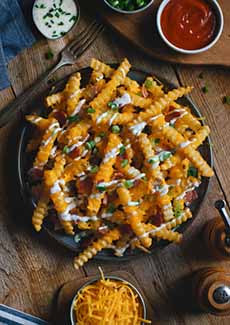
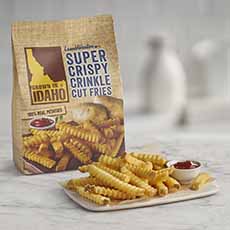
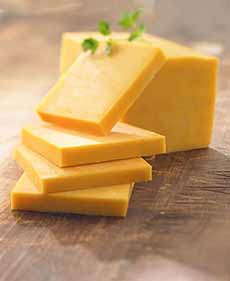


 Crescenza Cheese[/caption]
Crescenza Cheese[/caption]




